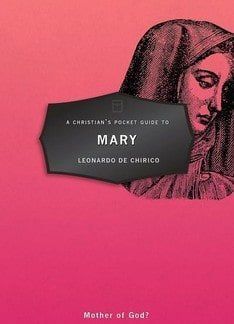This short, readable book is profitable not only for presenting the problems surrounding the subject, but also because it is edifying. It begins with a biblical portrait of Mary. It then explores how the relatively brief biblical references can be twisted into Mariology, not only in teaching but in devotion.
It concisely presents the teaching of recent popes and then examines the theological problems with Mariology. A final chapter refocuses attention on the Mary of Scripture and how we can appreciate her person and role.
The theme that ties the bouquet together is how to understand the title ‘Mother of God’, commonly attributed to Jesus’ mother by Roman Catholics. It is an important question, as the current teaching of the Roman Church has ramifications that were unknown during the Reformation.
‘Mother of God’ is a stumbling block for many Protestants, who prefer ‘Mother of Christ’. Leonardo De Chirico, a leading evangelical thinker on Roman Catholicism, knows its doctrine and history well. This has followed years of study and first-hand teaching experience in Padua, Italy.
Against the temptation to think Mariology is just a side-show in Catholicism, the author shows how it fits hand-in-glove with the Roman Church’s doctrine of grace. God is distant, but Mary’s grace brings God near.
The title ‘Mother of God’ (Theotokos) wasintroduced by the Council of Ephesus in AD 431. It was part of the legitimate defence of the deity of Christ and the unity of his person, but it had unexpected consequences. It opened the door to unwarranted Mariological hyperbole. Instead of Christ himself, Mary became central: Mother of God, Mother of the Church, and ‘our Mother’.
What began implicitly at Ephesus (the importance of the goddess Diana there cannot be overlooked) led to a theological, and then a devotional and liturgical shift, ending in the hyper-veneration of the Virgin.
All this should not, however, lead us to forget what the author calls ‘Mary’s way’, as a bright example of how to be a follower of Christ in dark times.
The book is well referenced, with endnotes, and is clear in its explanations. Regrettably, no in-depth treatment is given to Jesus’ words from the cross to John and Mary (John 19:26-27). Recent Catholic exegesis sometimes twists this round to say that John is given to the care of Mary, not the opposite. It might also have been useful in this context to present Jesus’ church as being founded on the apostolic confession (Matthew 16:18).
De Chirico’s tone is non-polemical and states biblical truth without giving offence. His book would be useful to anyone discussing the subject with Catholics or to give them as a presentation of what evangelicals think.
Paul Wells
Liverpool




